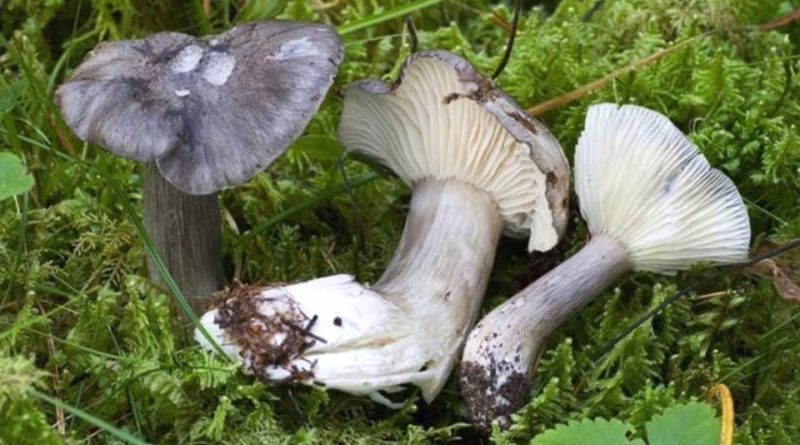Hygrophorus atramentosus
Hygrophorus atramentosus
Hygrophorus atramentosus (Hygrophorus atramentosus (Alb. & Schwein.) Haas & Haller (1978)) is a basidiomycete mushroom belonging to the Hygrophoraceae family.
Systematic –
From the systematic point of view it belongs to the Domain Eukaryota, Kingdom Fungi, Phylum Basidiomycota, Class Basidiomycetes, Order Agaricales, Family Hygrophoraceae and therefore to the Genus Hygrophorus, to the Subgenus Neocamarophyllus and to the Specie H. atramentosus.
The terms are obsolete synonyms: Hygrophorus camarophyllus ss. Bresadolae and Hygrophorus camarophyllus var. atramentosus (Albertini & Schweinitz) Papetti.
Etymology –
The term Hygrophorus comes from the Greek ὐγρός hygrόs humid and from φορέω phoréo to bring, to have: ie that collects and conserves moisture. The specific epithet atramentosus comes from the Latin atramentus, which means black liquid (for its color).
Geographic Distribution and Habitat –
Hygrophorus atramentosus is a fungus that grows under spruce, possibly also with the presence of beech, mainly in calcareous soils; it is rare or in small groups. The mycelium fructifies in the autumn period.
Recognition –
The Hygrophorus atramentosus is distinguished by a hat of 3.5-8 cm, of slate gray color with metallic nuances, from convex to a center with a lowered center, with a thin margin, often irregular, long involute and a surface decorated with radial blackish fibrils . The lamellas are white in color, with sometimes grayish, adjoining or decorrent shades, quite spaced, thin and joined by ribs on the bottom. The stem is 4-6 cm x 8-20 mm, colorless to the hat in the upper part and with a tendency to lighten at the base; it is cylindrical, full, slightly enlarged towards the base. The flesh is whitish but slightly gray under the cuticle, with a slight but characteristic smell and sweet taste. Under the microscope there are spores of 7-8.5 x 4.5-5.5 μm, elliptic, smooth and white in mass.
Cultivation –
Hygrophorus atramentosus is not a cultivated fungus.
Uses and Traditions –
This mushroom, in the past, was considered a chromatic variety of the common Hygrophorus camarophyllus from which, however, is distinguished, as well as the gray rather than brown, both for the different aroma and for the fact that fruit in a period following this.
Possible confusion can also occur with the Hygrophorus marzuolus, which grows only in spring. It is also morphologically similar to the Hygrophorus calophyllus from which it is distinguished by the pink color of the lamellae. Another possible confusion is that with the Hygrophorus agathosmus which, unlike the three previous species, is of poor food quality and with a typical bitter almond odor.
The Hygrophorus atramentosus is of excellent edibility and has a light smoky flavor.
Preparation Mode –
It can be prepared as other edible hygrophores and however more recommended in a mixture of mushrooms and it is always advisable to consume them always and only after at least a medium-term cooking, ie 25/30 minutes in the pan, thus not taking specimens into consideration eaten raw.
Guido Bissanti
Sources
– Wikipedia, the free encyclopedia.
– Cetto B., 2008. Real mushrooms, Saturnia, Trento.
– Pignatti S., 1982. Flora d’Italia, Edagricole, Bologna.
– Conti F., Abbate G., Alessandrini A., Blasi C. (edited by), 2005. An annotated checklist of the Italian vascular flora, Palombi Editore.
Warning: Pharmaceutical applications and alimurgical uses are indicated for informational purposes only and do not in any way represent a medical prescription; there is therefore no liability for their use for curative, aesthetic or food purposes.


